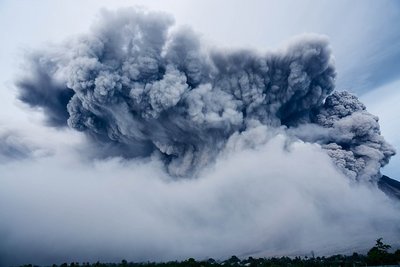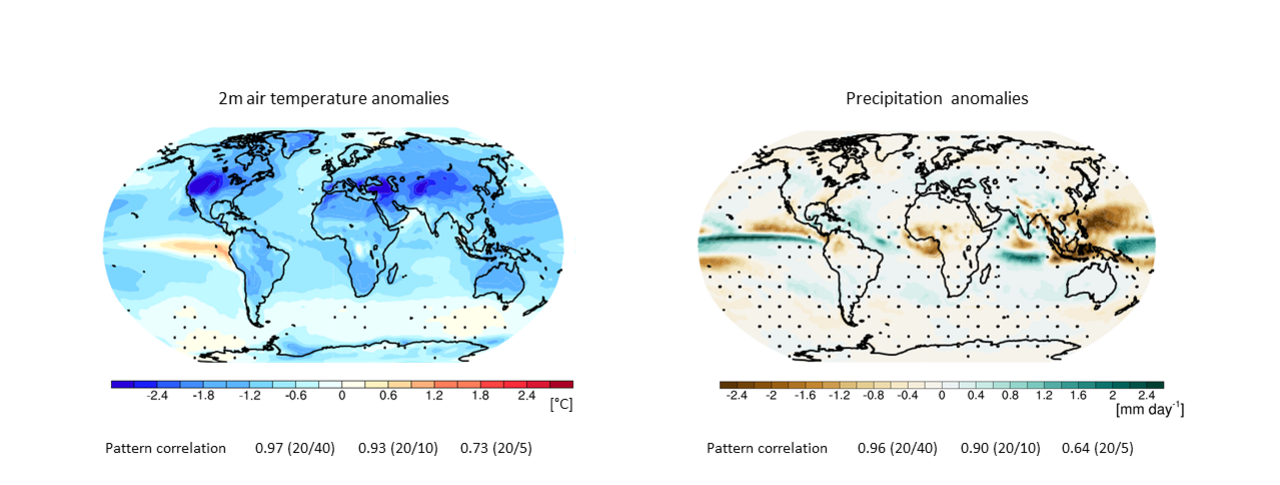Linear climate response to idealized tropical volcanic eruptions

Large explosive volcanic eruptions are a potential source of uncertainty in the evolution of the climate system on the timescale of a few years, as they cannot be predicted in advance. How large eruptions affect the Earth's climate is fairly well understood, but their regional effects on different time scales remain uncertain, as does the precipitation response. Historical eruptions vary in strength, geographical location and season of the eruption making it difficult to draw general and robust conclusions about the emergence of the volcanic signal from internal variability which is important for climate projections. Timmreck and colleagues therefore use an idealized large ensemble set-up of tropical Northern Hemisphere summer eruptions with different sulfur emission strengths to investigate whether there is a linear relationship between forcing and response and at what eruption strength the signal emerges from internal variability.
Their results show that for idealized tropical eruptions, global and hemispheric mean near-surface temperature and precipitation decrease linearly for sulfur emissions between 10 and 40 Tg S (Figure 1). A stratospheric emission of 20 Tg S, which is about twice the upper estimate of the 1991 Pinatubo eruption, is identified as a threshold where the signal is statistically significant at global and hemispheric scales. Seasonal and ensemble mean patterns of near-surface temperature and precipitation anomalies are highly correlated across eruption strengths (Figure 2), especially for larger emission strengths in the tropics, and are strongly modulated by the El Nino-Southern Oscillation (ENSO). Emergence of the volcanic signal is more frequent when looking at ENSO composites rather than the mean of all states. Emergence of cooling occurs on a hemispheric scale, while the emergence of the precipitation response is more localized and mainly confined to the tropical and subtropical ocean.
Overall, the results suggest that there is a potential to predict patterns of near-surface temperature and precipitation anomalies on the seasonal scale if the volcanic forcing pattern is similar to the equatorial symmetric one of the 1991 Pinatubo eruption. This potential could help to prepare society for the regional climatic consequences of such an event.


Original publication
Timmreck, C., D. Olonscheck, A. Ballinger, R. d’Agostino, S.-W. Fang, A. P. Schurer and G. C. Hegerl, (2024), Linearity of the climate response to increasingly strong tropical volcanic eruptions in a large ensemble framework, J. of Climate, 37, 2455–2470, https://doi.org/10.1175/JCLI-D-23-0408.1.
Contact
Dr. Claudia Timmreck
Max Planck Institut for Meteorology
claudia.timmreck@mpimet.mpg.de
Dr. Dirk Olonscheck
Max Planck Institut for Meteorology
dirk.olonscheck@mpimet.mpg.de
